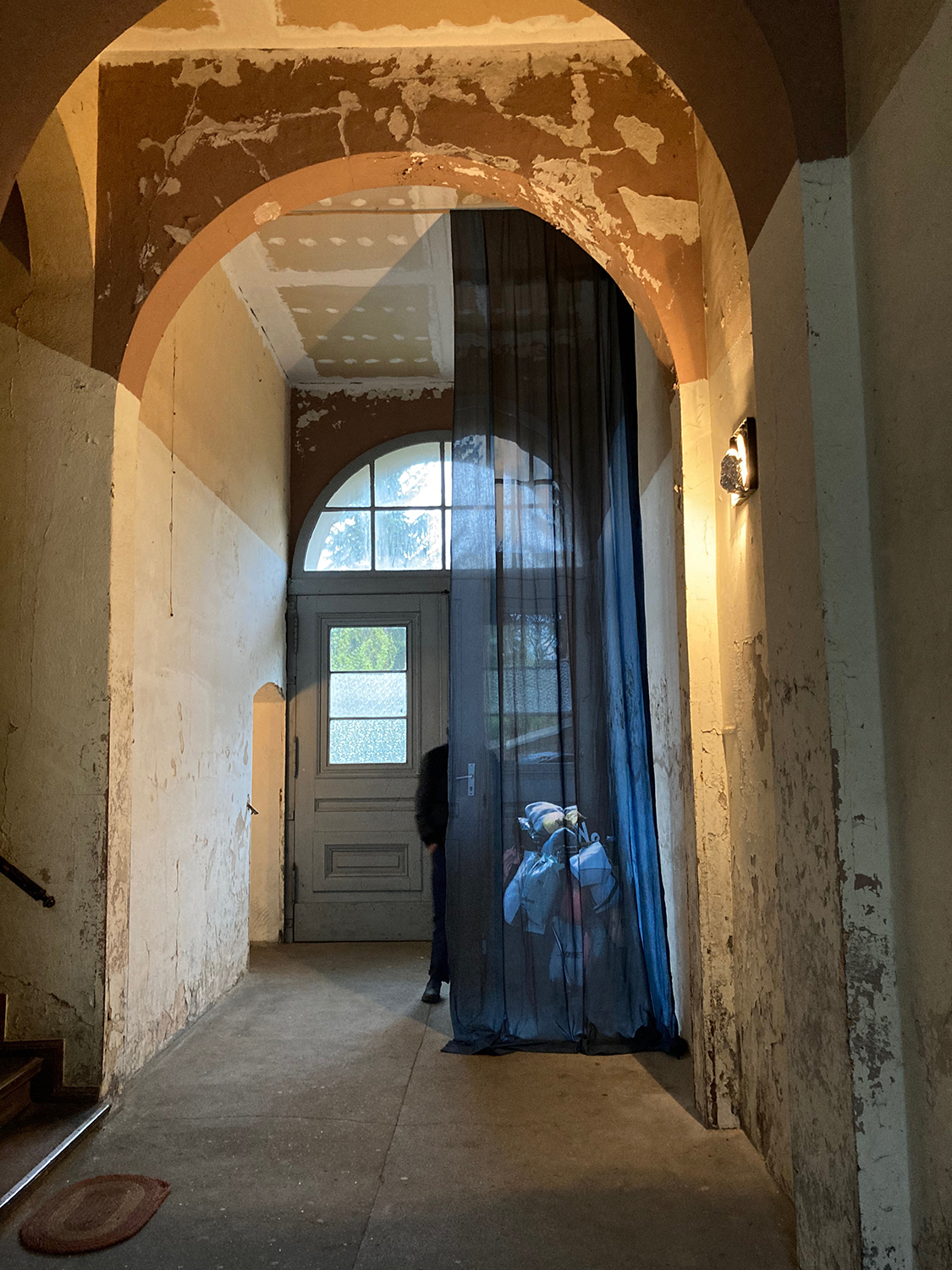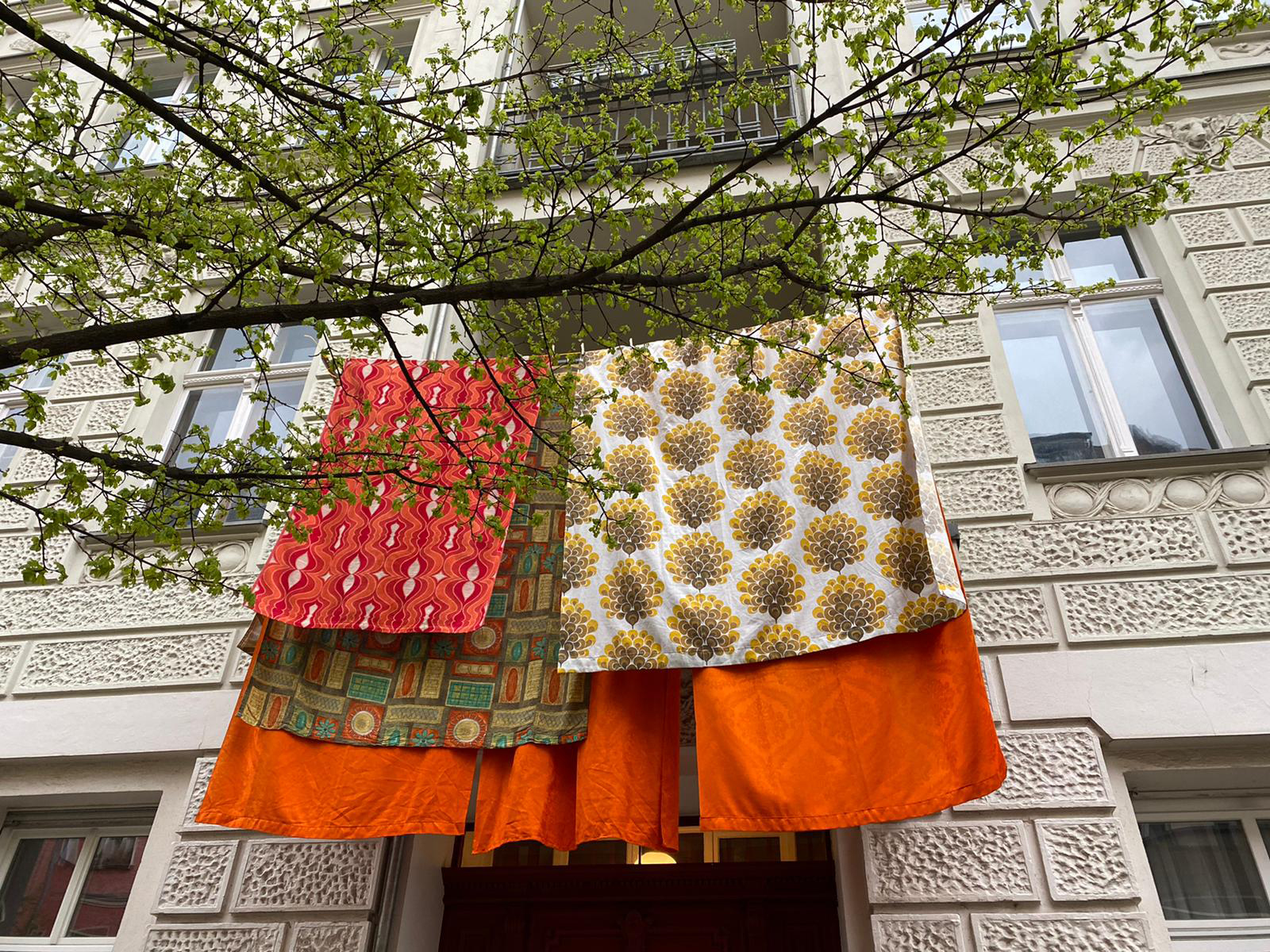Earlier this year, Berlin’s Die Balkone 2 invited dozens of Prenzlauer Berg-based artists to place work on their apartment balconies, in windows or on the street below
In a public square in the Berlin district of Prenzlauer Berg, Sam Durant was shouting at a dead man. More specifically, the American artist was aiming a megaphone at a giant bronze bust of German communist party leader Ernst Thälmann – one of very few GDR monuments in the city, preserved at the request of locals and freshly scrubbed of graffiti – and issuing complaints, first telling a disrespectful pigeon to clear off (it complied), then needling Thälmann for his male-pattern balding. Then his collaborator Ana Prvacki took over, and finally, at this lowkey launch event, loudhailers were offered to those who’d gathered: a quixotic opportunity to release whatever pent-up grievances came to mind. I was tempted to ask the fist-raising Ernst what he thought of an American telling Berliners how to use their public statuary, or how it feels to be a parkour site for ambitious local skaters; but I moved on from Complaints to Ernst, Ongoing (all works 2021), because there was much else to see, or at least to hunt for.

Durant, who moved to Berlin in 2018, was one of dozens of Prenzlauer Berg-based artists taking part in Die Balkone 2, the second edition of a project initiated by curators Övül Ö. Durmusoglu and Joanna Warsza in 2020, soon after the first lockdown began, in which, for a weekend, artists placed work on their apartment balconies, in windows or on the street below. (Durant was one of a handful of exceptions.) The neighbourhood, in former East Berlin, is gentrified to the point of being a citywide punchline: full of restaurants, modernist furniture emporia and well-heeled parents pushing prams, plus the occasional indolent art critic. But it’s also where many artists have lived and continue to live, and was, in GDR times, a hotbed of squat culture, fomented resistance, poetry, ad hoc art events, etc; and then there’s the longer history, to which bullet-pocked facades attest. Die Balkone, in its loose-limbed, hopeful collectivist pragmatism, might have more in common with the P-Berg of the 1980s than the present, even if the astringent whiff of coal-fired heating is long gone and the buildings are no longer blackened with soot.

The project is also scrappy in the sense that the work isn’t necessarily easy to find. The downloadable map notes that ‘getting lost is part of the game’ and, to protect artists’ privacy somewhat, does not give addresses, just vague locations on streets. Which is laudable until you’ve failed to find four works in a row; or spent time mistakenly translating a political poster that a militant non-artist had hung out before noticing Jan Peter Hammer’s Micro-nation? – a flag, black circle on red ground – positing his balcony as potentially sovereign space. Other works, though, required no guesswork: Tommy Støckel’s comically ominous PA19 comprised a pair of hot-pink geometric tentacular forms sprouting antically from windows, reaching down towards a bit of graffiti – a large, frazzled-looking, Muppety red face – that has dotted local buildings this year. Similarly pronounced was Yael Bartana and Saskia Wendland’s In-carnations Circle, a pavement-based mandala of takeaway carnations memorialising the 400 members of the wartime resistance group ‘Red Orchestra’, including Marta and Walter Husemann, who were both imprisoned by the Nazis and for whom this particular street is named.

Reactivating occluded histories, both major and minor, was on a number of artists’ minds: in a city where nearly 90 percent of streets are named after men, Pinar Ögrenci, discovering that part of her street used to be named after a female anti-Nazi politician, brought Ella Kay back as a ghostly, half-smiling face on a flag. In a more sentimental vein, Durmusoglu and Jörn Schafaff displayed objects made by Rirkrit Tiravanija at the address where he lived for six years (and brought artworld people together). Nearby, on a turn-of-the-century building that has seen many styles of decor pass through it, Andrea Pichl hung out gaudy 1970s-style GDR curtains recalling those she grew up with; next door, Christina Dimitriadis partnered them with a long winding sheet festooned with embroideries made while caring for a sick parent in Greece, their iconography – lots of animals, notably bears – referencing both Greek mythology and the artist’s relationship to Berlin. In the entrance hall of what used to be Berlin’s biggest urban shelter, built during the 1920s and now flanked by costly apartment blocks, Antonia Low’s phantasmal Arriving Winter Nights with All Belongings comprised a semi-opaque printed fabric curtain depicting what appears to be a homeless person’s trolley laden with bags, a sight connecting a century ago with the far-from-egalitarian present.

Perhaps the most resonant contribution, extended beyond the show’s run after media attention and positive local response, was Nasan Tur’s –Locked up–, in which he collaborated with his neighbours to place large photographic portraits of detained political figures in the windows of his apartment building, among them Aung San Suu Kyi, Julian Assange, Alexei Navalny and Osman Kavala. Tur’s aim, it appears, was to restore perspective, to hierarchise containment: yes, lockdowns are annoying and contentious, but they also encourage dwelling on one’s own inconveniencing while others who, whatever the finer details, have put themselves on the line at the cost of their own freedom. For a while after seeing that, nothing seemed to be where it was supposed to be, which led to an extended period of neck-craning attentiveness to local architecture and the myriad things residents have on their own balconies – a built-in side effect of the concept – and time to ponder the fruitfully open-form, lo-fi imperatives of Die Balkone itself. And if that wasn’t compensation enough for the schlepping, you could always complain to Ernst.
Die Balkone 2, various venues, Berlin, 30 April – 2 May 2021
